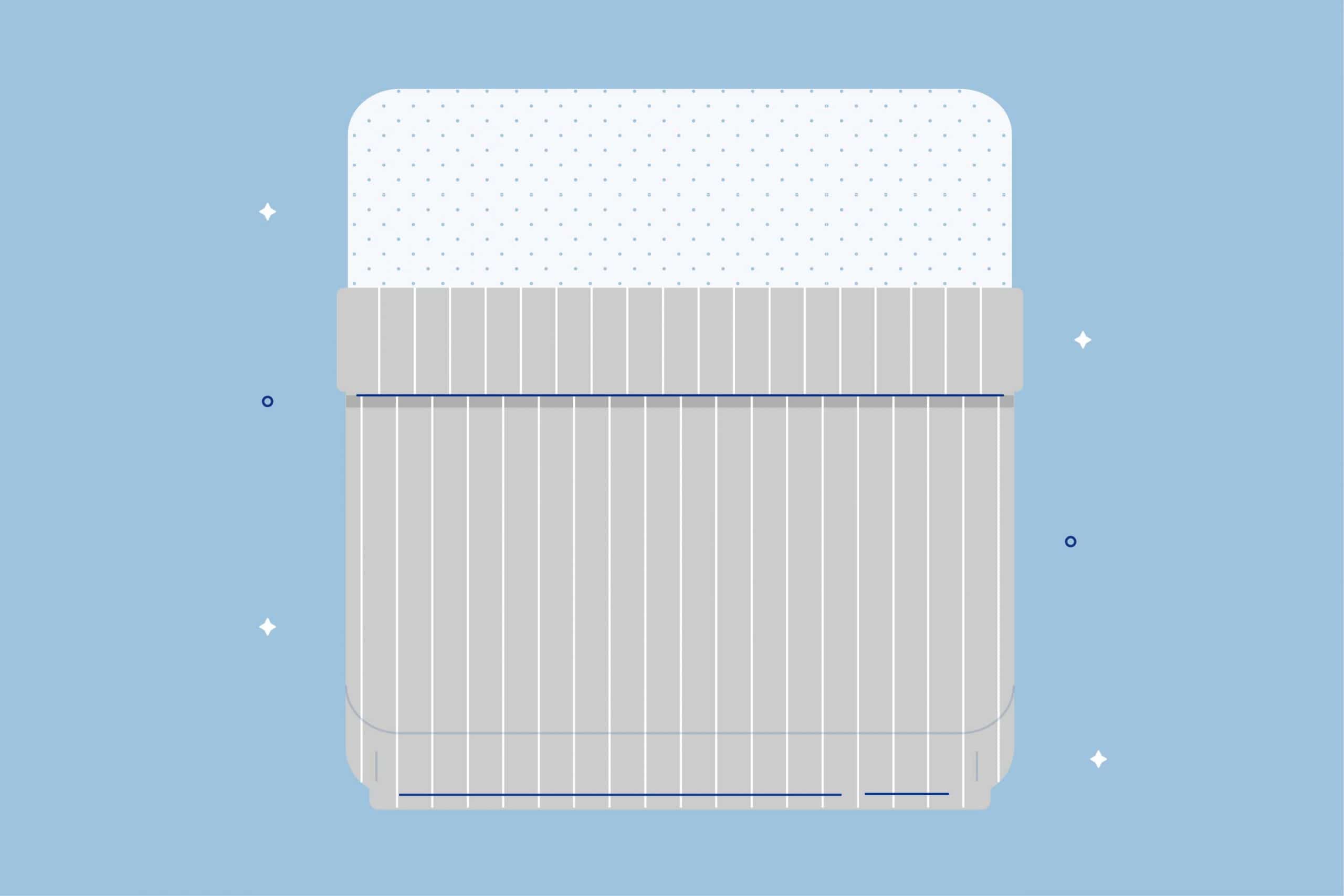Key Takeaways
- Regular Cleaning for Better Sleep: Cleaning your comforter regularly is essential for maintaining a fresh and comfortable sleeping environment. While it doesn’t require washing as frequently as bed sheets, a clean comforter helps prevent the accumulation of dust mites and allergens, ensuring a better night’s sleep.
- Follow Care Instructions: Always check the care label on your comforter for specific cleaning instructions provided by the manufacturer. These instructions will guide you on the appropriate washing method, water temperature, detergent, and any other care recommendations to ensure the longevity of your comforter.
- Spot Clean and Repair: Before washing your entire comforter, consider spot cleaning to remove specific stains. Using DIY stain removers like baking soda and water can be effective. Inspect your comforter for tears or loose seams, and repair them with a needle and thread before washing to prevent further damage.
Keeping your comforter nice and clean is the key to a better night’s sleep. Even though you don’t need to wash the comforter as frequently as your bed sheets and blankets, your comforter still accumulates dust mites Verified Source National Library of Medicine (NIH) World’s largest medical library, making biomedical data and information more accessible. View source and allergens. Regular cleaning can also help your comforter maintain its fluffy appearance.
We recommend that you wash your comforter every three months, but if you don’t sleep with bed sheets or experience allergies, you should clean your comforter weekly. It’s essential to clean your comforter by following the proper care instructions for long-lasting comfort. These five easy steps will help keep your comforter fresh and clean and may extend its lifespan.
Quick Guide: A 30-Second Summary
| Best Comforter Overall | Amerisleep Recover+ Comforter |
Read the Care Label
Before you start the cleaning process, always check the laundry care label. Care labels are usually located by one of the bottom corners of your comforter. They contain instructions from the manufacturer on how best to clean your comforter.
The instructions should include the washing method, water temperature settings, drying cycle, and recommended laundry detergent. Tags may also contain other care symbols, indicating if the comforter can be washed with bleach or ironed.
Spot Clean
Spot cleaning the comforter before washing efficiently removes stains and cleans the material. Washing your comforter before spot cleaning could set the stain. Plus, you may not need to wash the whole comforter if there are only one or two stains. You can use any stain remover or a simple DIY stain remover.
One DIY stain remover we love is four tablespoons of baking soda mixed with ¼ cup of cold water to create a paste. This stain remover can be stored in an airtight container for future use.
If the stain is fresh, wet a soft, white rag in cold water. Press the wet cloth to the stain and lift it, then rub a small amount of stain remover to cover the stain. Let it sit for a few minutes. Take another clean, soft cloth and blot to remove the stain.
For older stains, dampen the stained area with cold water first, then cover with a stain remover and rub it gently into the material. Using another clean, white rag, blot the area to remove the stain. After you’re done, and if you’re spot-cleaning only, hang the comforter in a sunny area and wait until completely dry before using.
Using a white rag prevents any color from bleeding or transferring, which can run your comforter or worsen stains. Also, always use cold water instead of warm water when removing stains. Warm water will set the stain instead of removing it.
Repair Tears
Look over your comforter, checking for small tears and loose seams. Using a needle and thread, make sure to repair these areas before washing your comforter. Otherwise, the cleaning process could break loose threads and widen tears, causing the filling to spill out.

Making small repairs is an extra step, but it may be worth it if taking time to fix these small areas ensures your comforter lasts longer.
Washing Your Comforter
Place the comforter inside your washing machine to make sure it fits before actually washing it. The comforter should appear loosely stuffed and evenly distributed. If you have to pack in the comforter, your machine may be too small. It might be better to take your comforter to the local laundromat instead—large, industrial-sized washing and drying machines can handle larger comforters, like king size comforters, for thorough cleaning.
For the best care, choose the cool water setting on the delicate cycle for your washing machine. If possible, add an extra rinse cycle to remove dirt and bacteria more effectively. Add mild detergent, since it’s gentle on most fabrics. Please note: if you don’t have a dryer, choose the hot water setting instead. The higher temperature kills dust mites.
Hand Washing
Some comforters may need to be hand-washed because some materials are too delicate and could break down if put through a washing machine’s rigorous movement. To hand-wash your comforter, use your bathtub.
Fill the tub with cold water and add a mild detergent. Mix by swirling your hand in the water. Fully immerse your comforter in the water, but don’t wring it out. You could distort its shape and possibly damage the filling.
Instead, gently press down the comforter and swirl through the water. Let the comforter soak for 10 minutes before rinsing. Drain the water while gently pressing the comforter.
Fill the bathtub with cold water again, and continue pressing down on the comforter until you no longer see any suds. Drain the tub and press down on the comforter to remove excess water. Hang dry or place the comforter in the drying machine on the delicate or air-dry cycle.
Dry Cleaning
Some materials are best dry cleaned. If a comforter contains down feathers, the dry cleaning process won’t strip the feathers of their natural oils, unlike laundry detergent. This natural oil is what keeps down feathers soft and fluffy.
Some materials, like wool and silk, are damaged when soaked in water. Drying cleaning soaks the material in a particular solvent instead, more effectively cleaning the comforter without the risk of damage.
Drying Your Comforter
After washing, place your comforter in the dryer. It might be a good idea to give your comforter a good shake. The material won’t be so condensed, and shaking out your comforter can help it dry faster.
Add a few clean tennis balls or wool dryer balls to the dryer. The balls absorb more moisture and remove static. Both tennis balls and wool dryer balls prevent the comforter’s filling from clumping in one area.
Tumble dry on low heat. The lower temperature means the comforter may take longer to dry, but it’s a gentler drying method that could prevent the comforter from wearing out. Check the dryer every 30 minutes until your comforter is dry.
Remove the comforter and air out in a sunny area for a couple of hours. The sun’s rays kill any remaining dust mites and ensure your comforter is thoroughly dry. Using a comforter before it’s completely dry can cause mold and mildew growth.
Other Cleaning Guides for Bedding
The best way to ensure that your mattress lasts as long as it should, along with your other assorted bedding, is to clean them regularly as needed.
For pillows especially, we have:
- How to Wash and Dry All of Your Pillows
- How to Disinfect Your Pillow
- How to Wash a Body Pillow
- How to Fluff a Pillow
For sheets, we have:
- How Often Should You Wash Your Sheets?
- How to Make Sheets White with Household Items
- How to Get Blood Out of Sheets
- How to Make Sheets Softer
- Can You Wash Sheets with Clothes and Other Items?
- How to Iron Sheets
For blankets and other coverings:
- How to Wash a Quilt
- How to Wash a Duvet
- How to Clean an Electric Blanket Safely
- How to Clean a Weighted Blanket
- How To Wash a Crochet Blanket
For other items of bedding, we have the following:
- How To Clean a Memory Foam Mattress Topper?
- How Often Should You Wash Your Mattress Protector?
- How to Clean an Upholstered Bed Frame
We also strongly suggest having a mattress protector to save you from having to consult one of our specialty mattress cleaning guides after an accident or spill:
- How to Remove Urine Stains and Smell From a Mattress
- How to Freshen and Deodorize a Mattress
- How to Remove Blood Stains on Your Mattress
- How to Clean Vomit from a Mattress
- How to Get Poop Stains out of a Mattress
- How to Remove Coffee Stains from Your Mattress
- How to Remove Makeup Stains from Mattresses
- How to Remove Rust Stains on a Mattress
- How to Get Sweat Stains Out of a Mattress
- How to Dry a Wet Mattress After Water Damage
- How to Get Lint Balls off a Mattress
- How to Spot Mold on Mattress
FAQs
Can you dry clean a comforter?
Some comforters should be dry cleaned instead of placed in the washing machine. Check the care instructions to see how best to wash your comforter. Down comforters last longer if they’re dry cleaned, because the harsh chemicals from laundry detergents strip the down feathers of their natural oils, losing their fluff. This results in a flat comforter that may no longer be as comfy.
Where can I take my comforter to be washed?
If your comforter is too big for your washing machine, you can take your comforter to a laundromat for cleaning. Laundromats have extra-large washing and drying machines. While it may seem inconvenient and cost you a few dollars, cleaning your comforter at a laundromat may be a better option than hand washing. To clean your comforter, run the washing machine on the delicate cycle before transferring your comforter to a dryer.
How much does it cost to dry clean a comforter?
If your comforter requires dry cleaning, you can drop it off at a local dry cleaner. The price for cleaning your comforter ranges between $20 to $50, depending on the comforter size and the materials it contains. The cost may also increase if your comforter needs extra services, like repairs.
How often should you wash a comforter?
For best practices, you should wash your comforter every few months. Unlike bed sheets, your comforter doesn’t have direct contact with your body, so it doesn’t absorb as much body fluids and dirt. However, if you don’t use a top sheet or blanket, or experience allergies, washing your comforter every week is better. That way, you can enjoy a fresh, clean comforter without the discomfort from bad smells and allergens.
Why does my comforter smell?
Over time, dust mites, bacteria, and other allergens build up inside your comforter. The comforter can also absorb moisture from your body, especially when sleeping without bed sheets. This accumulation of dirt and grime produces a bad smell. Regularly cleaning your comforter every few months removes allergens and bad odor, leaving you with a fresh, clean-smelling comforter.
Clean Comfort for Better Sleep
For the best care, clean your comforter every few months, or for best practices, when the seasons change. You may want to increase this frequency if you only sleep with a comforter or if you have allergies.
If you don’t wash your comforter, you may notice a bad odor after awhile. Your comforter may also lose some of its fluff. These factors could disrupt your sleep by decreasing your comfort levels. Washing your comforter may seem like a hassle, but it’s worth it when you can wrap yourself in soft, fresh-smelling comfort for a good night’s sleep.
About the author
Stacy Liman is a journalism graduate student and a freelance writer with a focus on mindfulness and content marketing. Her passion for understanding and writing about the science of sleep enables her to provide valuable insights into achieving healthier and deeper rest. Stacy's commitment to helping people improve their sleep drives her exploration of new mattresses and sleep-promoting gadgets.
View all posts





